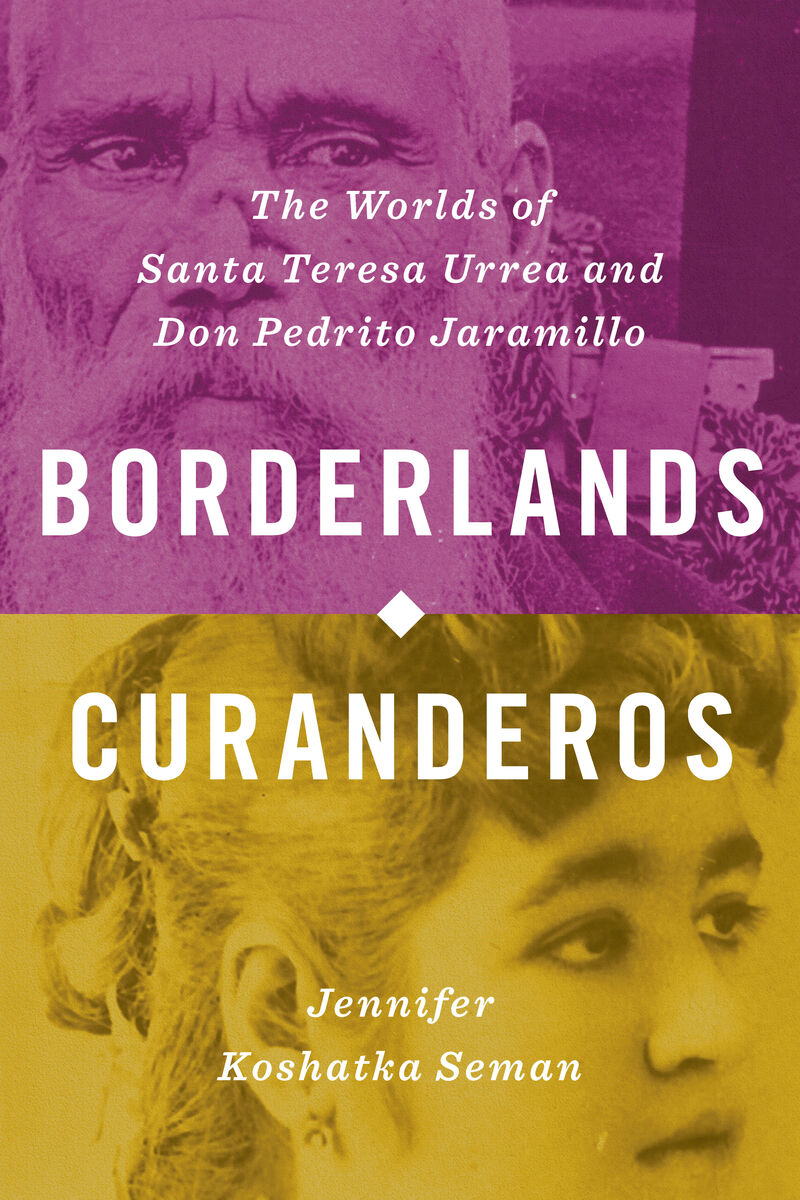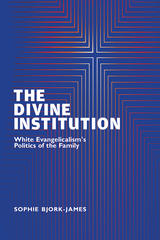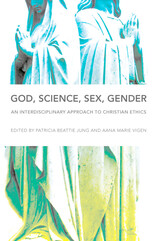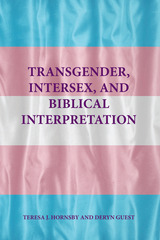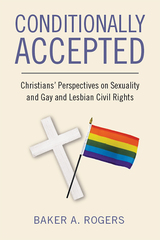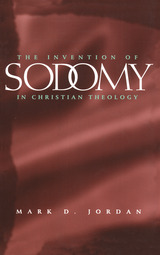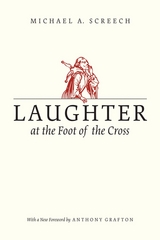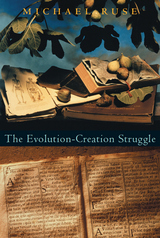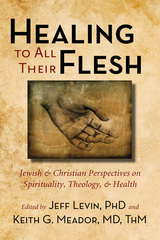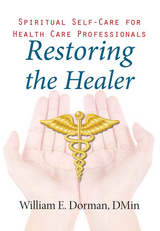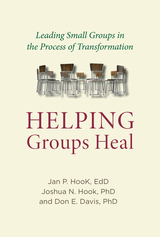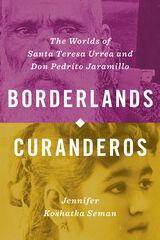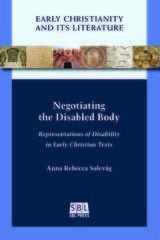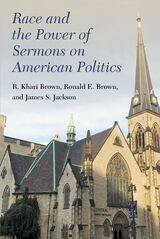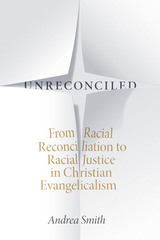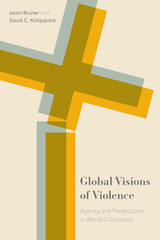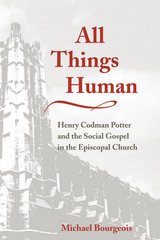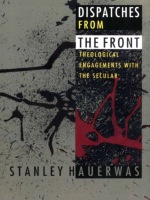This illuminating book is a welcome addition to the literature. Admirably reported, it will please readers and scholars alike.
— Luis Alberto Urrea
In prose vivid and sensitive, Jennifer Koshata Seman offers stories in the microhistorical vein that immerse us in the lives of Santa Teresa Urrea and Don Pedrito Jaramillo, while illuminating historical transformations in the US-Mexico borderlands. We see how benevolent healers could prove fierce critics of national governments, challenge scientific rationalism in medicine and politics, inspire rebellion, and rise in peoples’ hearts to the status of saints. Each possessed the “don,” or spiritual gift of healing, yet saw their patients’ ailments as being lodged as much in racism and inequality as in the world of spirits. Borderlands Curanderos is as compact and elegant as the saints’ medallions their adherents carry to this day.
— James F. Brooks
In this beautifully textured book, curanderos Santa Teresa Urrea and Don Pedrito Jaramillo emerge as central figures in the history of the US-Mexico borderlands. Jennifer Koshatka Seman shows how, in turning to these curanderos, ethnic Mexican and Indigenous people were also shaping new transnational communities and so remade their own worlds.
— Tisa Wenger
Borderlands Curanderos is a highly engaging read for anyone interested in the medical and health humanities, history of medicine, and US-Mexico borderlands history. Jennifer Koshatka Seman’s analysis is complex and multilayered, which leaves much for the reader to contemplate, especially if it were to be used for undergraduate and graduate courses. This book reminds readers of the power of folk medicine and the uses that communities make of it.
— Synapsis
[Don Pedrito Jaramillo and Santa Teresa Urrea's] lives and deeds must survive the plague of forgetfulness and amnesia, the tendency in North American culture to bury the past and look to the future. We should be grateful, in this regard, for scholars, such as Jennifer Koshatka Seman, who resurrect their memories and preserve their legends.
— Journal of the American Academy of Religion
Seman provides a refreshing new perspective on North American borderlands history in [Borderlands Curanderos]... Seman’s in-depth monograph paints a compelling picture of the lives of the two curanderos Urrea and Jaramillo as they served the needs of the diverse and marginalized populations in and around the border...Borderlands Curanderos reframes borderlands history by focusing not only on faith healers, but squarely on the populations that they served. In doing so, Seman’s book invites larger discussions about the importance of the history of curanderismo on the border.
— Western Historical Quarterly
Seman will convince readers that a century ago, and perhaps still, curanderos erased social boundaries and supported the downtrodden regardless of background…Recommended.
— CHOICE
"Seman lets the details of [Santa Teresa Urrea and Don Pedrito Jaramillo's] curanderismo practice...shine through. Rarely have these histories of healing been examined with purpose or even side by side. Seman also keeps our attention on the ways that these borderland histories dovetailed with globally inflected conversations around Spiritism and Spiritualism, challenged the efficaciousness of modern medicine, and even upended state authority in poignant ways on both sides of the U.S.-Mexico border....It is clear that Seman spent significant amounts of time with borderlanders who care deeply about curanderismo and searched far and wide to claim archival evidence. That investment adds to important conversations about the scope and content of borderlands religious histories."
— Pacific Historical Review
By bringing forth Santa Teresa and Don Pedrito to the center of an academic historical monograph, Dr. Seman brings them from the footnotes of folklore and into their rightful place as vital historical and political actors. Borderlands Curanderos is important reading for anyone interested in borderlands history, Texas history, Mexican history, and the history of medicine.
— New Books in Latino Studies
Santa Teresa Urrea and Don Pedrito Jaramillo have been subjected to extensive historical scrutiny, so it is refreshing that Jennifer Seman brings novel interpretations to their lives and memories, stressing the liminality of border regions divided by geopolitical boundaries but unified by deep ethnic beliefs, ways of living, and hostility...Seman fleshes out the healers’ lives within an excellent contextualization of the region....Seman’s book adds substantively to the historiography of Mexican curanderas/os. It is well researched and well written. Graced by images and maps that greatly assist the reader, it could easily be assigned in an undergraduate course.
— Hispanic American Historical Review
Among [books about curanderos], Seman’s contribution stands out, particularly for the ways in which she moves the discussion away from the bizarre or patronizing to fully contextualizing each of these healers within the much larger currents in which they lived. In so doing, she normalizes what might otherwise read as weird medicine or quackery into a coherently logical system of remedies....a valuable and highly readable study, especially at a time when we remain so preoccupied by matters pertaining to identity, healing, and illness.
— Southwestern Historical Quarterly
Through Seman's microhistory, we can begin to appreciate the social and healing entanglements involving individuals seeking health on both sides of the border...Unlike earlier medical anthropologists, Seman does not focus on herbal cures, candles, and prayers. Through her study of curanderos, we see how Mexican and Anglo-American societies remained entangled fifty years after the Mexican War.
— Journal of American History
One of the best aspects of this book is the author's ability to embed the therapeutic practices of these two healers within the various medical and racial discourses of the period. Seman not only does an excellent job of describing the popularity of homeopathy, the fascination with electrical cures and elixirs, the great appeal of the spiritist and spiritualists movements, and the burgeoning authority of the American Medical Association—all with a great economy of words—but effectively describes the gendered and racialized assumptions surrounding healers and their various healing modalities...Borderland Curanderos is a well-written, well-researched, and eminently readable study that draws on a wealth of archival sources (e.g., consular reports, political manifestos, government documents), local newspapers, and a wide range of secondary sources, including anthropology, history, medicine, religion, and Chicanx studies.
— American Anthropologist
A compelling comparative treatment...Borderlands Curanderos brings coherence to an elusive, noninstitutionalized hallmark of religion in the borderlands: healing...Seman’s book has rendered the most thorough historical comparison of [Santa Teresa Urrea and Don Pedrito Jaramillo's] philosophies, practices, public perception, and immediate local context...This book will be of greatest interest to historians and scholars of American religion, healing traditions, and the U.S.-Mexico borderlands. It is well organized, tightly argued, and accessible.
— Journal of Southern History
Seman shows how borderlands healing practices troubled conceptions of medicine and modernity, race and national identity, even state power and capitalist logic...While offering stark reminders of state power—from regulation of healing practices to Juan Crow laws to the binational cooperation that crushed the Yaqui rebellion—this book also testifies to a relentless creativity and irrepressible urge toward alternative means of imagining and inhabiting the world.
— American Religion
Seman has produced an important work that offers a complex understanding of curanderismo at the turn of the twentieth century in the U.S.–Mexico borderlands. She explains the power of curanderismo as a meaningful social practice with indigenous roots and significant global influences, and, in doing so, she demonstrates how healing practices in a periphery can shape the history of modern scientific medicine and redefine our ideas about the origins of knowledge production.
— Isis
Borderland Curanderos is a healing intervention in the history medicine and public health in the U.S. borderlands, an antidote against the narratives of colonization, violence, and oppression usually found in the histories of biomedicalization. The uplifting case studies of these curanderos as well as the book’s fluid prose and captivating style make it suitable for undergraduate audiences. It is a great complementary reading for graduate students and historians interested in the history of public health in the U.S.-Mexico borderlands. No reading list in borderland or Mexican-American history programs should miss this work.
— Bulletin of the History of Medicine
